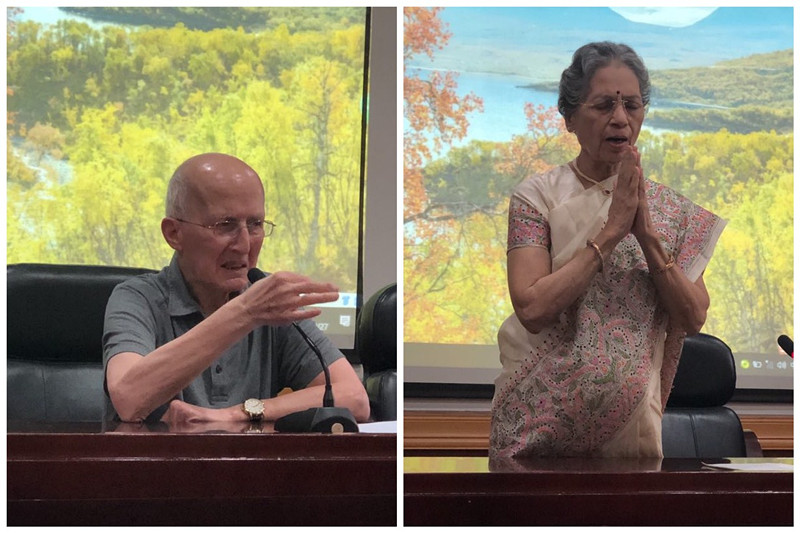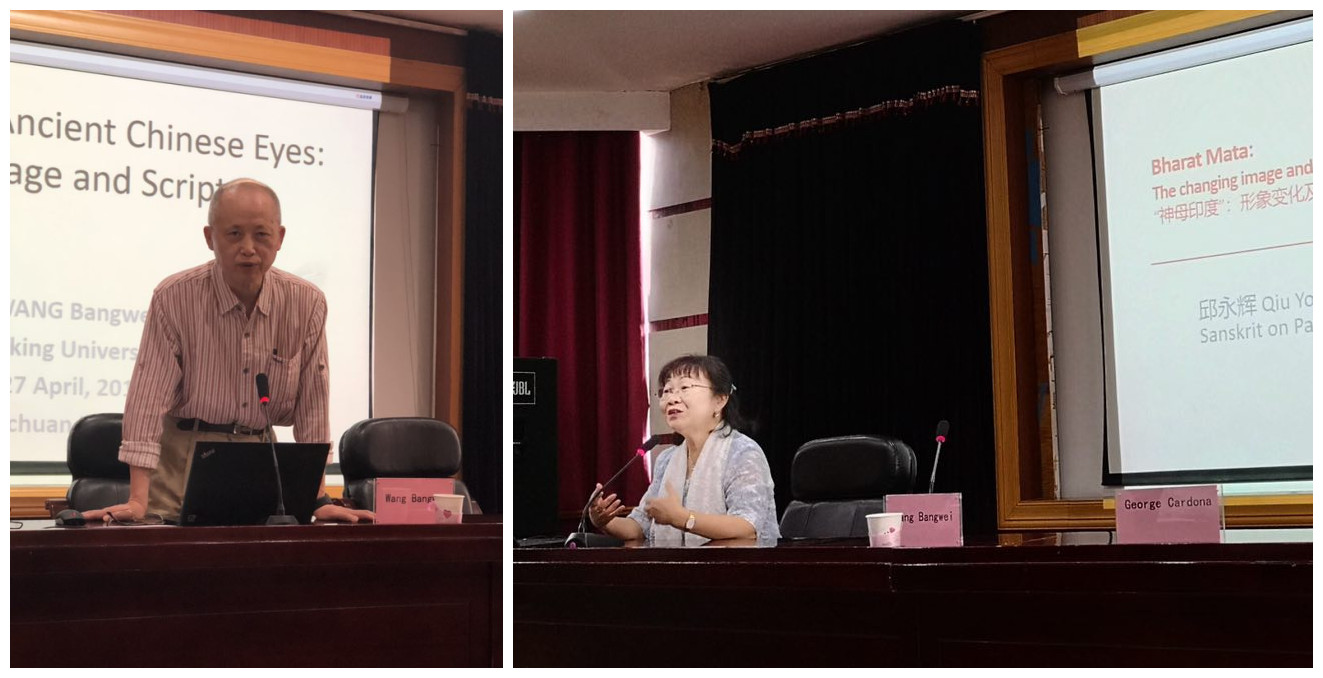On April 27–28, 2019, “Sanskrit in China International Conference 2019: Sanskrit on Paths,” which was jointly organized by the Centre for Tibetan Studies of Sichuan University and the Center for India Studies of Peking University, took place in Sichuan University. Focusing on the past, present, and future perspectives of Sanskrit studies in China, this event initiated the first in-depth academic exchange among leading Sanskritists from around the world to take place in China.

Along the roads, more precisely, the nets of roads, as reconstructed by archaeologists and historians, in the west of China, from the desert in the north, to the mountains and further the seas in the south, caravans brought goods, warriors brought wars, but Buddhist missionaries brought their doctrines to China from the beginning of the common era onwards, and Sanskrit since the third to fourth centuries. The process has continued since then to the present, with interruptions by many a political vicissitude, but was never completely cut off. The transmission of Sanskrit from India to China has included the transmission of scriptures and doctrines composed in and conveyed through Sanskrit. In both cases, in the past this transmission concerned mostly Buddhism. Today we are witnessing a wave of the influence of Hinduism, flanked by the spread of Sanskrit education for general public and Sanskrit studies in universities and institutes in China. A serious interest in Indian culture is developing in China, the time-honored cultural dialogue between India and China is gaining the general concern it deserves. The role Sanskrit played in the early days of Chinese Buddhism is rather obscure, but the impact of Sanskrit in the first phase of Tibetan Buddhism and in related contemporary religious practices is overwhelming and obvious. All of the above religious movements are intellectually indebted to Sanskrit, the salt of Buddhism and Hinduism. There are yet two more roads being trodden by Sanskrit, one of the oldest linguafrancas, and both lead to cutting edge fields: Sanskrit and computational linguistics, Sanskrit and digital humanities.
This conference aimed to trace all the roads taken by Sanskrit in the past, present, and future, with three dimensions: 1 ) The transmission of Sanskrit knowledge, 2 ) Sanskrit in modern society, 3 ) Sanskrit, digital humanities, and computational linguistics. Thirty-three scholars: twelve from the USA, India, England, Germany, Norway, Holland, and France; and twenty-one from Peking University, Chinese Academy of Social Sciences, China Tibetology Research Center, Fudan University, Sichuan University, University of Electronic Science and Technology of China, Beijing Foreign Studies University, Shanghai Jiaotong University, Southwest Jiaotong University, Yunnan Minzu University, Inner Mongolia University, Shandong Normal University, Tibet University of Tibetan Medicine, presented during the conference. Prof. Yingfu Li, Deputy Dean of the School of History and Culture delivered the welcoming speech. Two leading Sanskritists, authorities of Pāṇinian studies, George Cardona, Professor Emeritus, University of Pennsylvania, and Saroja Bhate, Professor Emerita and former Honorary Secretory of Bhandarkar Oriental Research Institute, delivered opening speeches. Bangwei Wang, a leading scholar of Sanskrit Buddhist literature and the history of the cultural relation between India and China, Boya Professor of Peking University, Director of Centre for India Studies of Peking University delivered the keynote speech,“Sanskrit in Ancient Chinese Eyes: Language and Scripts.”Yonghui Qiu, an authority on contemporary religions in China and the religion and culture of India, research professor and Deputy Director, China Center for South Asia Studies, Sichuan University, professor of School of International Studies and Institute of Taoism and Religious Culture, Sichuan University delivered the keynote speech“Bharat Mata: The Changing Image and Its Religious-political Significance.”
Senior experts of Indology, Tibetology, Buddhology, and Computational Linguistics, Shrikant Bahulkar, professor and Honorary Secretory of the Bhandarkar Oriental Research Institute; Diwakar Acharya, Spalding Professor of Oxford University; Michael Zimmermann, professor of Hamburg University, Director of Numata Center of Hamburg University; Claus Zoller, professor of Oslo University; Pieter Verhagen, senior lecturer of Leiden University, Amba Kulkarni, professor, Head of the Department of Sanskrit Studies of University of Hyderabad, and Gérard Huet, professor of Institut National de Recherche en Informatique et en Automatique, France, besides the conveners themselves, delivered lectures during the conference.

On April 29, participants of the conference were invited to attend three accessory events: “The First International Workshop on Abhay ākaragupta’s Madhyamakamañjarī ,” “Sanskrit, Digital Humanities, and Computational Linguistics,” and “Himalayas and Languages.” Constructive discussions on further cooperation were also held.
Sanskrit studies are essential for understanding the history and culture of the countries along the one-belt and one-route area. This conference has a positive effect on the development of Sanskritstudiesin Chinain general, and on that inSichuan Universityin particular. This event was jointly convened by Prof. Yonghui Qiu ( Sichuan University ), Prof. Bangwei Wang ( Peking University ), Prof. George Cardona ( University of Pennsylvania ), Prof. Hong Luo ( Sichuan University ), and Prof. Peter Scharf ( International Institute of Information Technology Hyderabad ). As co-organizers, the Gandhi Center for India Studies, Fudan University, India-China Yoga College, Yunnan Minzu University, Asien-Afrika-Institut, Hamburg University, the Centre for Yoga Studies, Hamburg University, and the Faculty of Oriental Studies,Oxford University contributed to this event.

